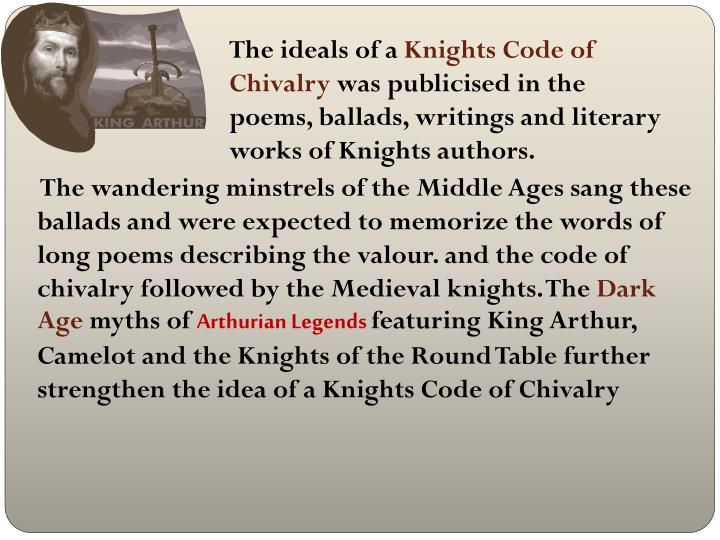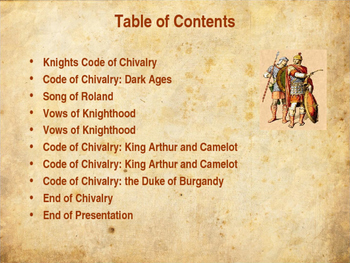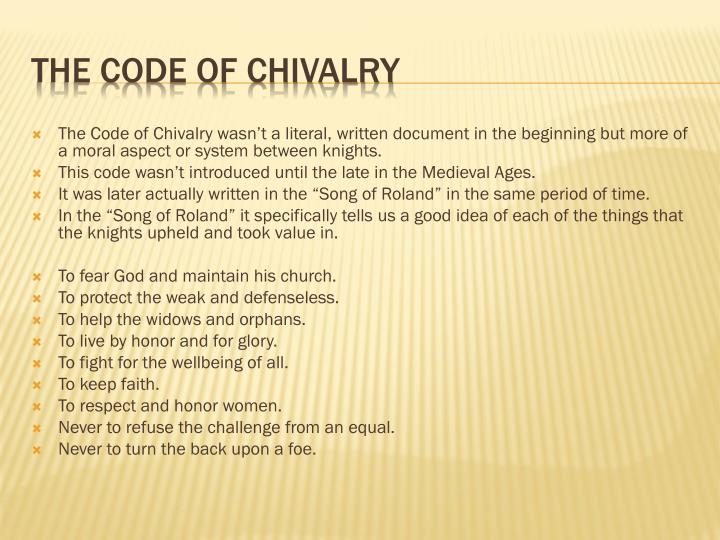


This makes the attempt to define one chivalry perilous. The variety among different authors could be even greater. Certain authors, including Chrétien de Troyes and Marie de France, were able to craft many different kinds of chivalric heroes, each of which had his own peculiar characteristics. There’s a great deal of variety within the different chivalric romances. A disclaimer is necessary before attempting to define chivalry: although chivalric literature is filled with ogres, dragons, and highly improbable events, it is complex, despite seeming fairytale-ish. Learn more about how small innovations and events could and did have huge effects during the High Middle Ages Defining ChivalryĬhivalry, as it emerged during the 12th century, was a potent weapon in the fight against unrestrained noble violence because the codes offered knights the opportunity to play a positive role within society. Knights were taught that their ability to fight could be put to good use on behalf of and within medieval society. Instead of simply telling knights what they could not do, they began to suggest there were things knights could do to make them better individuals. Throughout the High Middle Ages, certain members of the clergy moved away from this condemnatory stance.

The Peace and Truce of God movement did not appeal to medieval knights because it condemned and restricted actions they were not permitted to do.
#Chivalry code of knights series#
This is a transcript from the video series The High Middle Ages. By combining elements that appealed to nobles with elements that protected the people from nobles, medieval thinkers created the chivalric ideal.

Attempting to curb the violence and warfare that was plaguing Europe, authors created the chivalric ideal often associated with the High Middle Ages, blending older, heroic ideals with new, ecclesiastical interests. In the High Middle Ages, chivalric knights who were able to restrain their violent impulses and channel their violence into a good cause did so because certain 12th-century authors elaborated a code of conduct or ethics that medieval nobles were expected to follow. (Image: Tereshchenko Dmitry/Shutterstock) A New Heroic Ideal Where did the chivalric ideal come from? Take a close look at origins and nature of the chivalric code. But we have courageous firefighters, brave policemen, and many other men who take part in chivalry and usually do not even expect appreciation for what they’ve done.By Philip Daileader, Ph.D., The College of William and Mary The High Middle Ages were home to a class of warrior aristocrats perched atop high medieval society, but these nobles were a far cry from the chivalric knights that one often associates with the era. Today, we do not have knights with formidable weapons and chivalric tournaments, where they present their strength, skills, and courage. People’s self-interest and materialism eliminated the knightly code of honor and the spiritual capability of chivalry of old times has been replaced by conventional social etiquette, which includes the act of showing regard for others, good manners and politeness. The medieval tradition of chivalry did not survive because of the political situation in Europe following the Renaissance. Our modern notion of knights is very much based in the ideas of chivalry, and we have to blame medieval romantic literature for presenting knights as the chivalrous ideal. Unfortunately, the well-intended and beautiful "chivalric code", rarely affected most knights, who plundered, slaughtered, and looted often when given the chance. However, unlike medieval knights, who usually acted on their own, the nobles had a tendency to form knightly orders and brotherhoods supported by the ruling government.


 0 kommentar(er)
0 kommentar(er)
